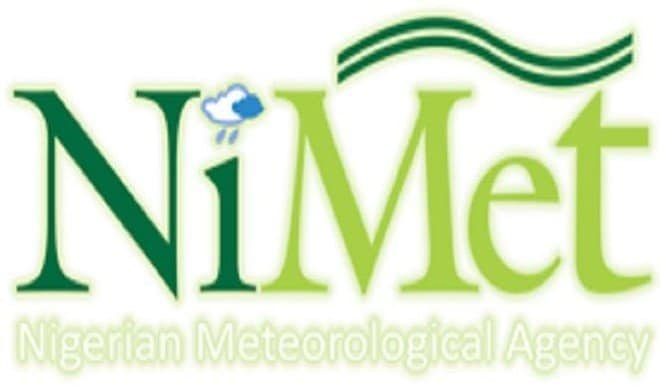BREAKING: NiMET Warns Of Waterborne Disease Risks Amid Anticipated Heavy Rainfall In 2025

The Nigerian Meteorological Agency (NiMET) has raised an alarm about the potential outbreak of cholera and other waterborne diseases in several states due to expected heavy rainfall and flooding in 2025.
In its Seasonal Climate Prediction released on Monday, NiMET identified Lagos, the Federal Capital Territory (FCT), Kaduna, Ebonyi, Cross River, Abia, and Akwa Ibom as states most at risk, particularly in flood-prone areas with poor sanitation practices.
According to NiMET, the heavy rains expected in 2025 could lead to flooding that would increase the risk of waterborne diseases.
“In the coastal parts of the country, an increase in rainfall, storm surge, and sea temperature rise could result in increased inundation and the chances of occurrence of water-related diseases,” the agency warned.
NiMET further highlighted that flooding could significantly worsen the spread of cholera, particularly in communities where open defecation is practised. The contamination of water sources during floods poses a serious public health risk, the agency noted.
In addition to waterborne diseases, NiMET predicted a rise in other health concerns, including malaria, meningitis, and heat-related illnesses such as dehydration, respiratory complications, and heatstroke. These are linked to changing climate patterns and rising temperatures.
The agency cautioned that high-intensity rainfall could result in flash flooding, even in areas forecast to receive near-normal precipitation.
Heavy rains could also lead to the contamination of drinking water sources, increasing the risk of malaria and other diseases like dysentery and diarrhea.
“Damp conditions will likely lead to a surge in respiratory infections due to accelerated fungal growth,” NiMET warned, emphasizing the broader impact of the weather conditions on public health.
NiMET’s predictions for 2025 also provide specific regional forecasts. The agency projected that Lagos, Delta, Bayelsa, Cross River, Rivers, and Akwa Ibom will experience the highest number of rainy days, ranging from 250 to 290 days. A second tier of states, including Ogun, Oyo, Ekiti, Osun, Ebonyi, Anambra, and Enugu, will experience between 200 and 250 rainy days.
In central states such as Niger, Kogi, Benue, Plateau, Nasarawa, Kwara, and the FCT, rainfall is expected to last between 150 and 200 days. Northern states including Sokoto, Katsina, Zamfara, Kano, Jigawa, Yobe, and Borno are forecast to experience 110 to 150 rainy days.
NiMET also projected that total rainfall for 2025 would range from 405 mm in the far north to 3,010 mm in coastal areas.
The agency forecasts that the rainy season will begin between March and April in southern states like Lagos, Ogun, Ondo, Ekiti, Edo, Cross River, Enugu, Ebonyi, Imo, Abia, and Anambra. In the central belt, rainfall is predicted to start between April and May, while the northern states will experience rainfall from early June to July.
A delayed onset of the rainy season is expected in parts of Plateau, Kaduna, Niger, Benue, Nasarawa, Taraba, Adamawa, and Kwara states. Conversely, an early onset is predicted for Delta, Bayelsa, Rivers, Anambra, and parts of Oyo, Ogun, Osun, Ondo, Lagos, Edo, Enugu, Imo, and Ebonyi.
NiMET also warned of severe dry spells, lasting over 15 days, in parts of Oyo State, including Saki, Iseyin, and Ogbomosho. A moderate dry spell lasting up to 15 days is predicted in various southern and southeastern states.
The agency projects that the 2025 rainy season will end between October 6 and December 17. The cessation of rainfall will begin in the northern states from the first week of October and gradually move southward, with southern coastal areas experiencing the end of the rainy season by mid-December.
